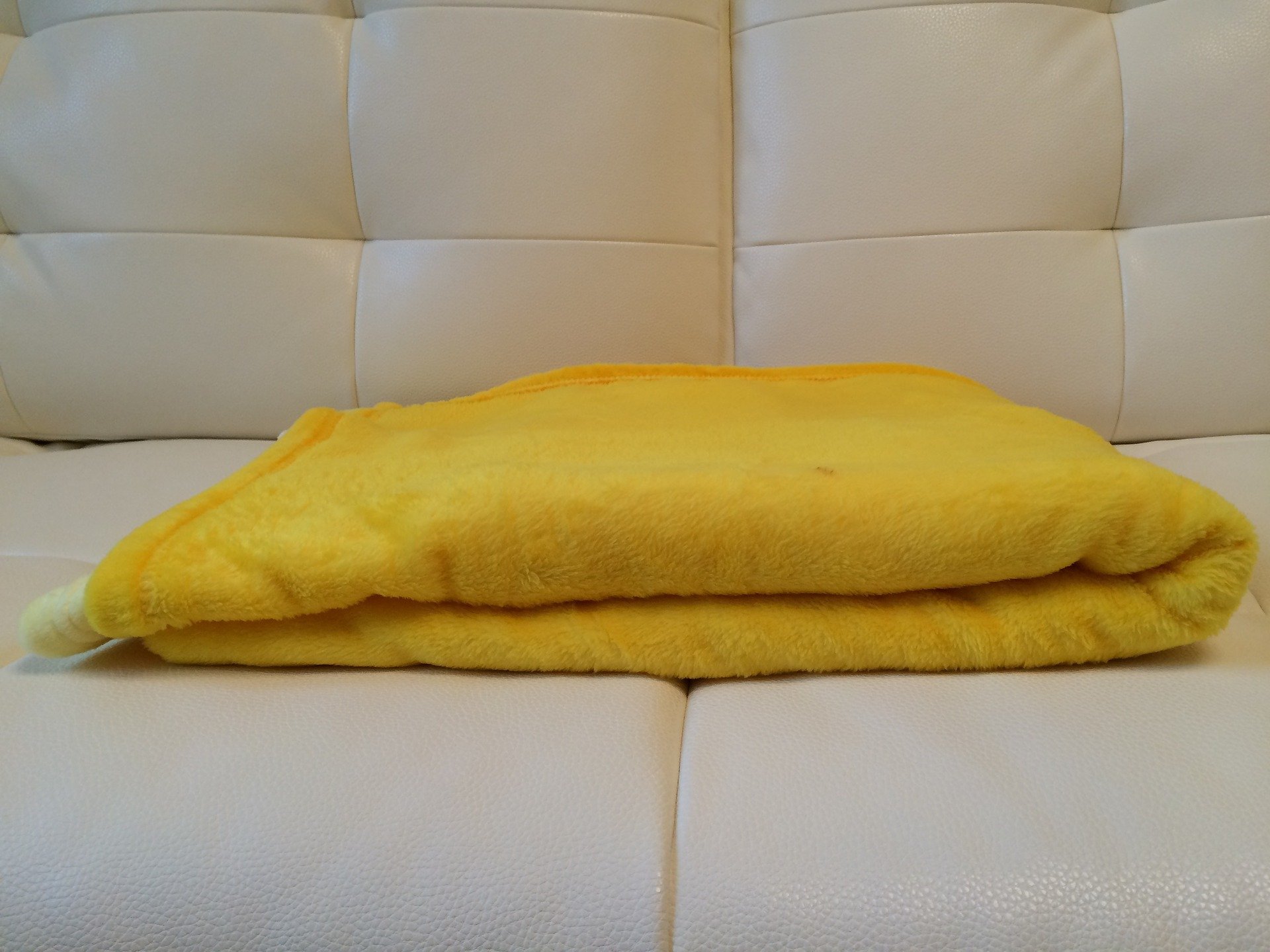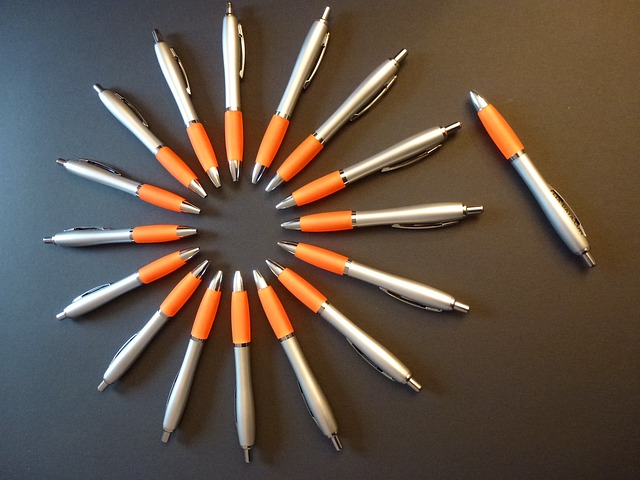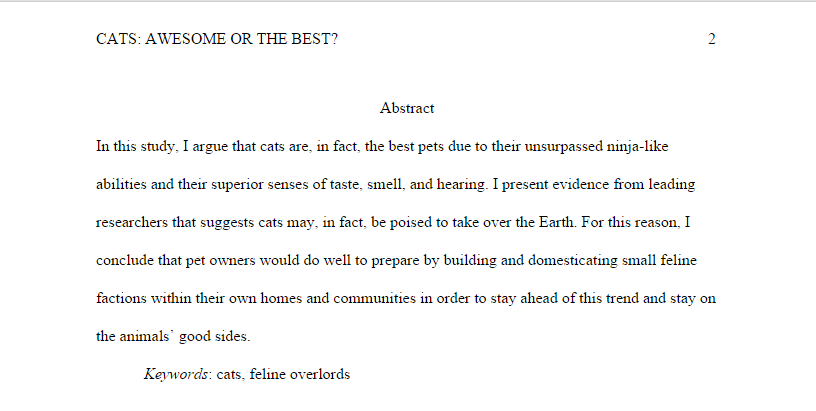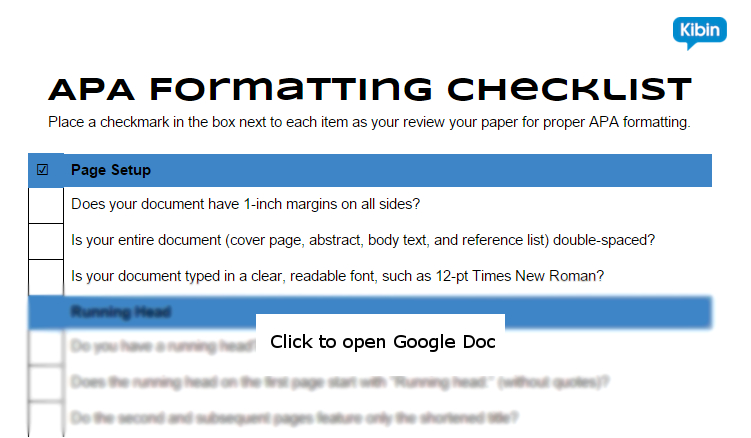It’s been my experience that there are two kinds of people in this world: those who can handle chaos and are happy to let the pieces fall where they may, and those of us who chase those people around trying to prevent disarray in the first place.
We like neatness. Tidiness. Orderliness.
And consistent formatting. Mmm.
So when your teacher asks you to use APA essay format for your paper and you have only the vaguest idea of what that means, you definitely want one of us in your camp.
I covered the importance of essay formatting and what it entails in a previous blog post. So go check it out if you haven’t already. I’ll wait here.
You good?
Cool.
In this post, we’re going to drill down into the specifics of APA formatting and how to ensure your essay looks just right.
What Is APA Essay Format?
“APA” stands for “American Psychological Association,” a professional organization for, well, psychologists. However, the organization’s official style guide, which is called the Publication Manual of the American Psychological Association, is used by students and professionals in a number of disciplines.
If your teachers ask you to use APA essay format, then they simply mean to use the formatting guidelines laid out in this manual. The manual tells you how to handle everything from the width of your essay’s margins to the citations for your sources.
Chances are, your library has a copy of the full Publication Manual for your perusal, which can be really handy when you have a very specific question.
But if you just want to quickly learn the basics and turn in a tidy, well-formatted essay, keep reading!
What Are the Most Important Elements of APA Essay Format?
General page setup
There are a couple of little formatting details you can take care of right off the bat as they will apply to your entire paper.
First, be sure you set your margins to 1 inch all the way around your document.
Secondly, be sure to choose a font that is clear and readable. The APA recommends 12-pt Times New Roman, but you could also go wild and use Helvetica, Georgia, Arial, or Calibri.
Last but not least, the entire document—from the cover page to the reference list—should be double-spaced with paragraphs indented 1/2 an inch.
Running head and page numbers
One of the distinguishing features of an APA-formatted essay is the running head. This is a short version of your title—fewer than 50 characters—that appears in the header of your document, justified with the left margin.
On the first page of your essay, usually the cover page, the running head is preceded by the words “Running head” followed by a colon. On subsequent pages, though, the running head is just the title.
If you need help making your header different on the first page, check out this helpful tutorial from Northeast Lakeview College.

Pro tip: Make sure that your running head is descriptive enough to give the reader some idea of the content. If the title of your paper is “Never Too Old: The Calming Effects of Blankies for College Students,” for instance, your running head should be something like “EFFECTS OF BLANKIES FOR COLLEGE STUDENTS” rather than “NEVER TOO OLD” or just “BLANKIES.”
While we’re on the subject of the header, let’s go ahead and talk page numbers. In APA style, you include the page number in the header of every page. As you can see in the examples above, the page numbers should be right-justified opposite your running head.
Cover page
Another key element of APA essay format is the cover page. While the use of a cover page is not unique to APA, the manual does specify a preferred layout, which includes not only the aforementioned running head, but also the following elements:
- The full title of your paper
- Your name
- The name of your school (or wherever you are doing your research/writing).
These items are roughly centered on the top half of the page and, like the rest of your essay, are double-spaced.
Abstract
APA papers often include an abstract, which is a short (150-250 words) summary of your essay, including brief descriptions of your topic, purpose, methodology, and/or findings.
The point of an abstract is to inform potential readers of your essay’s topic and purpose so that they can determine whether the essay is useful or relevant to their own research.
Whether you need to include an abstract depends partially on the whims of your instructor, so if you aren’t sure, just ask!
Assuming that you need to write one, let’s talk formatting.
You should center the word “Abstract” (no quotes, not bold or italicized) at the top of the page. Your abstract should be double-spaced with the first line justified with the left margin (usually, an abstract is a single paragraph, so there’s no need to indent).
While it’s not required, it’s not a bad idea to include keywords beneath your abstract if there’s a chance it will be included in a database as keywords make it easier to locate. Simply type “Keywords” below the abstract—indenting as though you’re starting a new paragraph—and then include a few relevant keywords, separated by commas.
Check out this example:
Main body
The title and intro
After formatting the abstract, move to a fresh, new page to begin the body section of your paper. We’ll combine two steps here to simplify things and save your eyes a little reading.
First, you need to restate the title of your paper. This serves as a label to signify the start of the actual paper.
I know, it seems sort of silly with the running head right there for all the world to see. But silliness aside, it is an APA requirement, so we’ll comply.
Then, it’s time to set up the introduction.
Intr …
Nope. Stop.
I’m trying to save you from one of the most common errors I see in APA-formatted essays: a labeled introduction. You see, the folks at the APA assume that readers are smart enough to know that the first section of a paper is the introduction. (And really, aren’t they right?)
Nothing will implode if you label it. Even professors mistakenly tell you to do so on occasion. But now, even if that happens, you can feel that swell of smug pride that comes with knowing how it’s supposed to be done.
Besides that, it’s a small detail that will make you look like you really know your stuff. Here’s how the first page of the body of your paper should look:
Headings
After your introduction, though, there’s a good chance that you will want to use headings for specific sections of your paper. Let’s look at how you should handle those.
In APA, there are five levels of headings. A level 1 heading is a “main” heading, such as “Literature Review” or “Methodology.” Level 2 headings are subheadings of level 1 headings, and level 3 headings are subheadings of level 2 headings, and so forth.
Each heading has its own specific format, as you can see in the table below.
Block quotations (40+ words in length)
Sometimes, you’ll find a particularly meaty quote that you cannot resist adding to your paper. Just remember that, if the quotation is more than 40 words in length, you need to create a block quotation.
In APA style, this means that you start the quotation on a fresh line, indenting the entire quotation by ½ inch. You do not include quotation marks around it, either.
The closing punctuation also goes immediately after the text of the quote, and no period goes after the parenthetical citation. Check out these examples from the APA blog to see block quotes in action.
Reference list
We’ve covered the formatting of APA references pretty extensively in past posts. Read APA Citation Made Simple (it includes a handy infographic!) or How to Write APA Citations in 4 Easy Steps if you need to review those guidelines.
However, there are a few formatting details to note for the overall page:
- First, center the word “References” (no quotes) at the top of the page—no bold, no italics, not followed by a colon. (I see all of these variations pretty frequently.) Let me reiterate:
References
- Next, be sure that you list your entries in alphabetical order according to the author’s last name (or whatever comes first in the entry).
- Double-space the list, but do not leave an “extra” space between entries. Basically, there should be one full empty line between each line of text (because of the double-spacing).
- Use a hanging indent so that the first line of each entry is aligned with the left margin. Second and subsequent lines are indented ½ inch.
Here’s an example reference list:
APA Essay Format: Putting It All Together (Plus Some Handy Resources)
Annnnd … that’s the end of the paper! You’re done formatting. You can totally remember all of this, right? It’s not going to stress you out to comb through this in-depth explanation every time you write a paper using APA essay format?
… yeah, I thought it might.
That’s why I made you a handy checklist:
You can print it out, mark it up, doodle your crush’s name in the margins—oh, and check off all of these APA formatting concerns as you revise or edit your paper.
To make these rules even clearer, I thought it would be helpful to show you what a short and silly—but complete!—essay looks like in APA format. Click the link below to open the paper in Google Docs.
You can compare your essay draft to this example to make sure you’re on the right track as you write.
You can also view an additional example at the Purdue OWL’s APA site.
The APA Style Blog is another fantastic and authoritative resource for all things style-related, including some lengthier discussions and rationales for some of the style guide’s more obscure rules and preferences.
Just remember: writing the actual content is the hard part. Formatting your essay is simply a matter of plugging the right information into the right locations.
With the checklist and example essay I’ve provided, you have the tools you need to format an APA-style paper that would make even the neatest neat freak proud.
Need a second set of eyes to make sure everything is just right? Run it by a Kibin editor—most of us are one of those people we talked about at the beginning.
Happy writing!










